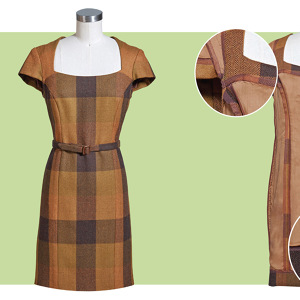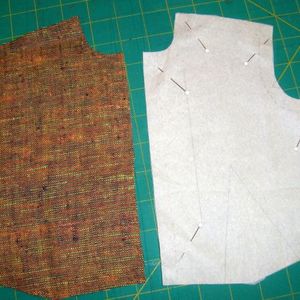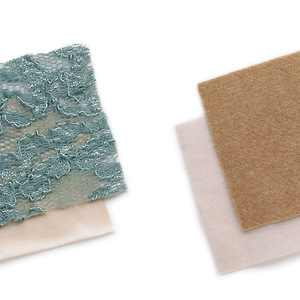
Threads author Daryl Lancaster explains the basics of underlining: adding a layer of fabric beneath the fashion fabric to support it and to hide show-through from seam allowances or other internal construction details. In many cases, Daryl suggests using an underlining rather than a separate hanging lining, as it makes future alterations easier.
Appropriate materials
Anything that can work for lining is appropriate for underlining, as long as it has body. There are sew-in underlinings, as well as fusible options.
SiBonne: This tailoring material, made by Armo, is no longer available, but Daryl recommends it if you can find a bolt online. It is made of rayon, has an anti-static finish, and it has a crisp hand. A good substitute would be silk organza.
Cotton flannel: Readily available, cotton flannel adds warmth as well as support. Worn flannel sheets can be upcycled as an underlining.
Silk saris: Used saris are crisp but smooth. If you have access to damaged saris, you can cut around torn or worn areas and create a lovely interior for your garment.
Fusible products: Fusible tricot interfacing is flexible and has crosswise stretch but is stable lengthwise. Textured weft-insertion interfacing keeps fabrics lofty and maintains their texture, so it’s a great choice when you’re sewing with handwoven tweeds.
How to mount an underlining
Daryl demonstrates the process of mounting an underlining to the outer fabric pieces on garments with narrow and wide panels. You’ll cut each garment section from fashion fabric and from underlining. Then you’ll baste the underlining to the wrong side of the fashion fabric.
Follow Daryl’s instructions for pinning and basting the underlining in such a way that you slightly reduce the underlining’s width. This doesn’t affect the fit of the finished garment, but it does prevent the underlining…

































Log in or become a member to post a comment.
Sign up Log in